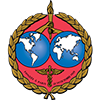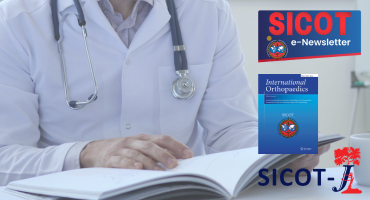
Training Around the World
Orthopaedic Training in Philippines: Blood, Sweat, and Tears
 Pierre Mella Pierre MellaManila, Philippines |
Out of the 7,107 Philippine islands, there are only 3 metropolitans namely Manila, Cebu and Davao. I was born and raised in Cebu City. This is the story of my residency training at the University of the Philippines - Philippine General Hospital, the national university hospital.
I can vividly remember the entire scenario during my interview for the orthopaedic residency programme in 2009. I was seated in front of eight attending physicians while the head of the acceptance committee stood up and walked behind me. I saw his hand coming from behind and he suddenly slammed four sheets of paper in front of me. This contained my curriculum vitae and application form. From this gesture alone, I knew that they meant business. These people who became my mentors believed that training residents is a way of life.
We have a 4-year straight orthopaedic programme. Since our hospital is a government-owned tertiary end-referral hospital, we got referrals from other hospitals for: 1) Acute, complex and multiply injured trauma patients; 2) Simple but mostly complex soft tissue and bone tumours that require a multidisciplinary approach; 3) Neglected and chronic degenerative knees, hips and spine; 4) Neglected fracture complications which include osteomyelitis and non-unions; 5) Contractures of the hand from either burn or neglected tendon injuries; 6) Chronic brachial plexus injuries needing muscle transfers or just nerve transfers if we get them earlier; and 7) Cold paediatric cases such as release of contractures in cerebral palsy and deformity correction.
As a first-year resident, we rotated in adult and trauma for twenty weeks each and in spine for another ten weeks. The second year residents, up until fourth year, had spine, adult, trauma, hand, and paediatric orthopaedics for ten weeks each. A slight difference in the third-year’s curriculum was that they didn’t rotate in spine that year but instead had an elective programme. This elective rotation was meant to help the residents get more exposure of the subspecialty that he was interested in or was contemplating on. In my case I divided it into three: minimally invasive trauma, spine, and sports. This was very helpful since it helped me decide which subspecialty I would really want to take after my residency. Our department allowed us to rotate anywhere locally in the Philippines or internationally. Of course, my parents had to help me fund everything for my elective rotation since the department doesn’t provide funding. It was worth it! I saw a lot of spine cases at Yonsei University - Gangnam Severance Hospital, arthroscopy cases at Singapore General Hospital, and minimally invasive trauma cases in Butuan Doctors Hospital (southern part of Philippines). It was good not just because of the training, but also because I got to experience orthopaedics in other countries. Coming from a third-world country, I saw how good their healthcare systems were. Also, I gained friends and learned about different cultures.
Each year level had its learning objectives both clinically and surgically. To be a little specific about it, a first year generally did simple amputations and simple external fixations. A second year did most of the complex external fixations, including application of Ilizarov fixators, and simple internal fixations of the long bones. They also did single-level discectomies, transpedicular biopsies, and not to forget, most of the debridement for trauma and infection. For the paediatric rotation, they mastered the Ponsetti casting for clubfoot since we had 15-20 children a week. Third-years handled complex trauma cases including fracture fixation in the multiply-injured patient, intra-articular fractures. They also did basic arthroscopic procedures, and all the amputation or reconstruction in tumour cases. The seniors generally became the chief of the service. They had to manage every patient and make sure that cases were referred to the consultant in charge. The fourth-years did all the "quality cases", in the eyes of a resident in training. They did knee and hip arthroplasties, pelvic fracture fixations, all traumatic, degenerative and deformity spine cases, and brachial plexus reconstructions.
Well, others may think that the cases I mentioned above are pretty basic. Yes! However, to be able to operate and be the primary surgeon is another story. All the residents had to present their cases in the Monday preoperative conference and got the beating of their lives from 15-20 attending physicians. We had to convince them that we knew everything about the case, and that we deserved to be the primary surgeons! The questions varied from basic science, surgical technique, post-op regimen, and pearls and pitfalls. Weekends were spent studying and talking to our mentors. Well, this is why I said SWEAT!
I just want to share a bit that makes it SWEATIER. We handled charity patients in our hospital. Patients were referred to us because they were too difficult or they simply had no money or social support. As a resident, we had to help these patients get funding but if we get unlucky then we have to shell out a bit from our own pockets. We had to personally accompany their relatives to the social service and explain the need for the surgery. We had to push the patients' wheelchairs or gurneys to the operating theatre or X-ray room since there was a lack of manpower. I could give tonnes of examples but I won’t. I just wanted to give you a glimpse of the difficulties in this training programme. I can’t help but to compare the training of the residents here in my current hospital, a private university hospital in a first-world country, where I am having my spine fellowship. To be brutally frank, they are very relaxed and sometimes passive. I am not generalising but it seems that some residents can get away without even studying the case. Obviously, the reason is that they are not the primary surgeons. Most don't think like surgeons and rather always think of themselves as assistants. I can't deny the fact that other residents here know about the case but if I were to compare them with the residents from PGH, then I'd say my co-residents know more - academic and surgical technique-wise. It was because of the preoperative conferences that made us study harder. It was because of the beatings that we became better. It was because we wanted to be surgeons. We were given the opportunity to be one if we passed the standards of our mentors. It wasn't always a walk in the park. Sometimes we only get to be first-assistants because our mentors deemed us unprepared.
We had five residents per year level. And as I mentioned, the workload was just overwhelming - mentally, physically and sometimes emotionally. I remember, as a first year, that you should do most of the basic work from X-ray supervision to manual census generation. It was because of the workload that we became closer to each other. Batch mates helped each other. We always worked in teams and we helped other subspecialty teams who needed us. A good example is when we were trauma rotators, we were always helped by co-residents from the paediatric and adult service. Usually we have dinner and drinks on Fridays. This was the time for us to air out ill feelings during the week. I used to give advice to my juniors during this time. I got good advice from my mentors during these gatherings. This is also common in the institution that I am at right now. Although the difference is that Filipinos are just too sensitive and personal. We knew each other's personal problems. Sometimes it doesn't really help but most of the time it does. It made us understand each other's mood and capacity to work. Whether we liked it or not, we simply became blood brothers!
In case you are wondering where the "tears" come into play, well, the department asked me to stay for an extra year - Yes, five years in total! Every batch has to sacrifice one to become the chief resident. This is actually an advantage for the resident, if you look at it from another perspective and not just being withheld for an extra year, since this time he is to function as part of the administration and as a junior consultant. As an admin, he had to arrange and attend meetings so that the department's and residents' concerns are addressed by the hospital operations office. As a junior consultant, he had to handle semi-private patients and eventually become the end-referral for all the difficult cases of the entire resident body. Above all, he had to take care of the welfare of the residents. This made my extra year worthwhile.
To be successful in our orthopaedic training in PGH, you need blood and sweat! But in the end, you will definitely have tears of joy.














